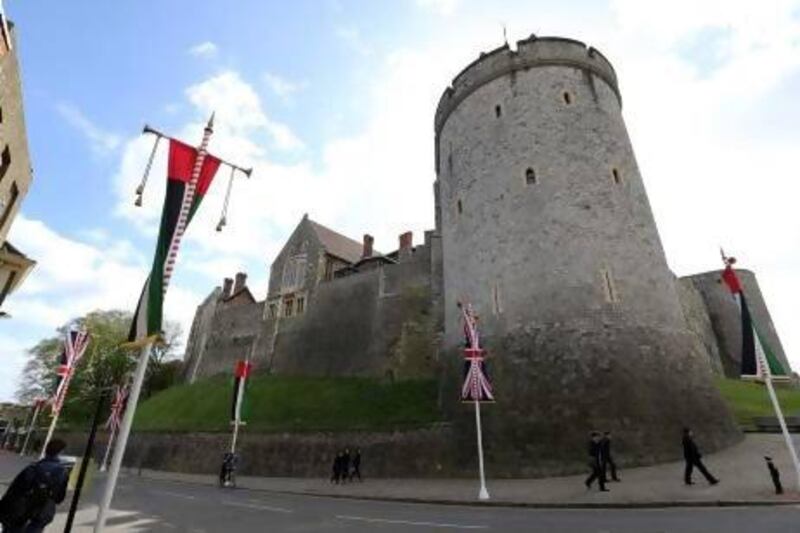ABU DHABI // It has been almost 25 years since the late Founding Father, Sheikh Zayed, walked the halls of the oldest, largest inhabited castle in the world.
Today the President, Sheikh Khalifa, will follow in his father’s footsteps when he visits Windsor Castle, Queen Elizabeth’s favourite weekend home.
The queen will today hold a lavish lunch in Sheikh Khalifa’s honour at the centuries-old royal residence, in the county of Berkshire.
The visit will become part of the castle’s rich regal history, which spans almost 1,000 years.
Used as a royal residence since the time of Henry I, the castle sprawls across more than five hectares and contains about 1,000 rooms.
Run by more than 500 staff, it is home to early 19th century state apartments, described by the art historian Hugh Roberts as “a superb and unrivalled sequence of rooms, widely regarded as the finest and most complete expression of later Georgian taste”.
The castle holds treasures from the royal collection, including arms and armour.
First built in the 11th century after the Norman invasion by William the Conqueror, it also contains a catalogue of famous artwork by Rubens, Rembrandt and Gainsborough, and the 15th century St George’s Chapel.
The chapel is considered by the historian John Robinson to be “one of the supreme achievements of English perpendicular Gothic” design.
Originally designed to protect Norman dominance around the outskirts of London, Windsor Castle was built as a motte and bailey, with three wards or fortified areas surrounding a central mound. Over time, the wards were gradually replaced with stone fortifications.
The castle withstood a long siege during the First Barons’ War at the start of the 13th century, the tumultuous period of the English Civil War, when it was used as a military headquarters for Parliamentary forces and a prison for Charles I.
In 1992 it survived a fire that destroyed or badly damaged some of the most historic parts of the building, including St George’s Chapel and the state dining room, now fully restored and returned to service.






